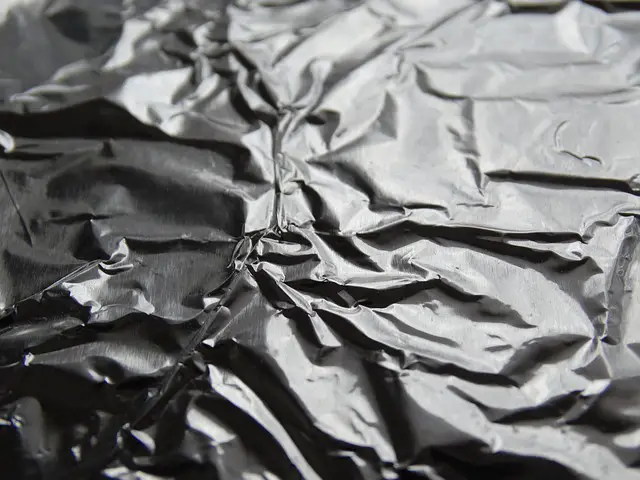Aluminum foil is an excellent wrapper in the kitchen, but i don’t recommend using it to bake cookies or delicate treats because I feel it adds unwanted elements to the overall aesthetics.
Any other baking project and I’ve got you covered, even so with a golden tip: Which side of aluminum foil to place underneath the baking tray, or wrap around the baked articles for an excellent result. Let’s begin.
Which side of aluminum foil to use when baking?
Use the side labelled non-stick to line trays or pans for baking brownies, yeast cakes, or any other articles intended to be popped in the oven. That’ll make them slide off easily without actually sticking to the surface of the foil in direct contact with them.
If you’re using a regular foil with non-stick properties however, choosing either side should be totally fine since they both lack any non-sick coating. It’s not like one side cooks way better than the other, or have some added advantage whatsoever.
To mimic the non-stick effect in regular foils, you may need to rub the surface with shortening or butter to serve as the coat or slippery surface. That works decent but not great!
The dull and shiny foil sides
If you’ve ever looked up a regular foil closely, you’ll notice that it has two sides that are aesthetically different from one another. The first side bears a matt dull finish whereas the opposite side has a clean (more like) shiny appearance.
The functional difference between these two is actually non-existent, however, and whichever side you end up using with will affect your baking no more than the other side would.
According to the Reynold’s Consumer Products (which is a popular brand that deals with the production of consumer products such as cooking wrappers and storage papers: Reynold’s is actually one of the most popular brands when it comes to household foil wrappers, and they actually first gained popularity through their hugely popular essential; the Reynold Wrap foil), the shiny and dull characteristics on foil sides is actually the result of an inevitable limitation during manufacture.
Aluminum foil is made by pressing large slabs of aluminum ingot back and forth between rollers until it’s less than 2 mm thick. This reduction is called milling and the foil is passed through cold rollers in order to achieve such thickness.
During rolling, a point is reached where the aluminum ingot is reduced so thin (but still a decent margin away from its final thickness) that it risks breaking or tearing into different components upon further pressure.
To prevent this restriction, the aluminum is doubled or folded over its other side which is then passed through the cold rollers unaffected. This fold ensures that the side exposed to the rollers turn out very smooth and shiny whereas the sides in contact turns out dull.
And that’s how and why you get a shiny and dull side on your foil piece.
Now as far as a nonstick foil is concerned, there is a clear functional difference associated with either sides, just as a visible difference exists in their overall appearance. The dull side or the one printed with the nonstick label should always line up your batter or baked articles for nonstick results, where’s the shiny side goes outside. Substitute them carelessly and your biscuits will definitely turn out “flat” like a punctured tyre! That’s after the constant flattening already there when you opt to use aluminum foil rather than parchment paper or a silicone baking mat (slipat).


